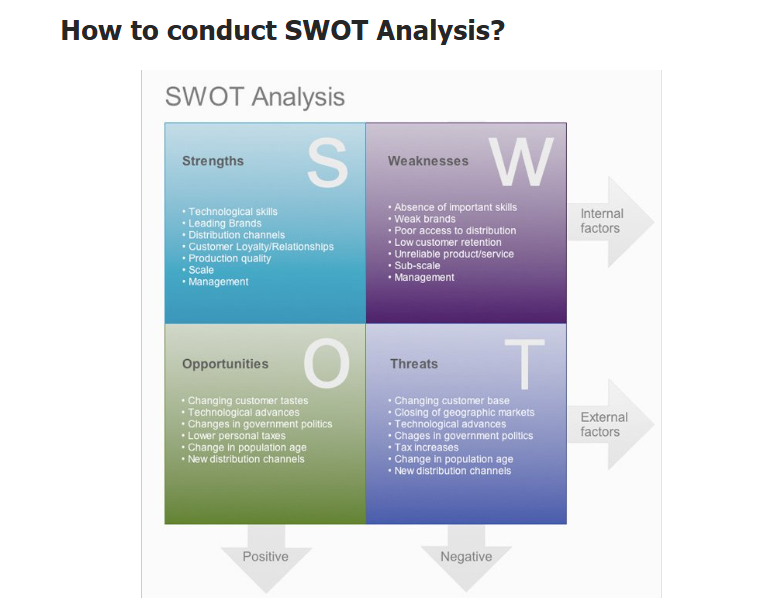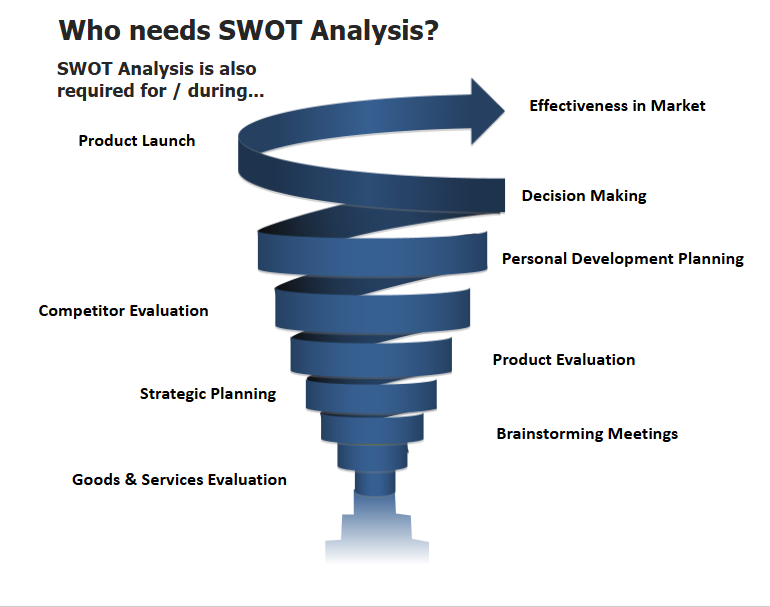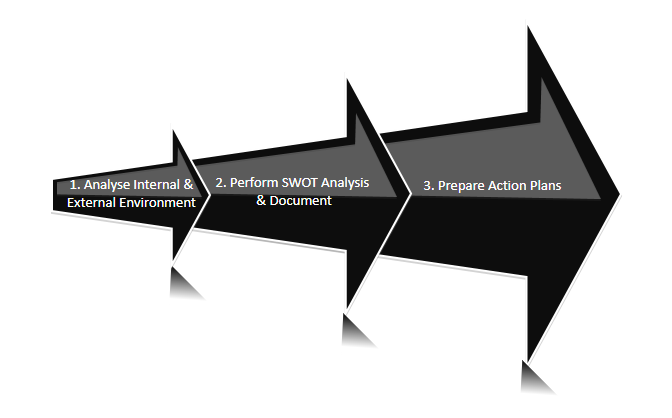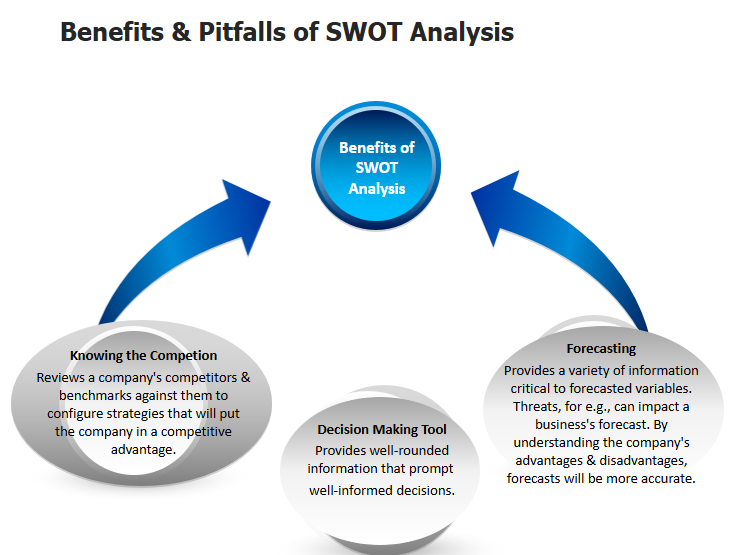
The Importance of SWOT Analysis in Business Planning: A Case Study Approach
"The only constant in life is change." - Heraclitus. This ancient Greek philosopher's profound observation perfectly captures the dynamic nature of the business world.
In today's rapidly evolving marketplace, businesses must be agile, adaptable, and proactive to thrive. This is where SWOT analysis emerges as an invaluable tool. SWOT, an acronym for Strengths, Weaknesses, Opportunities, and Threats, is a powerful framework that helps organizations assess their internal and external environments to identify key factors that can impact their success. By understanding their unique strengths, recognizing areas for improvement, identifying emerging opportunities, and anticipating potential threats, businesses can develop and implement effective strategies for sustainable growth.
Understanding SWOT Analysis
SWOT analysis involves a deep dive into a company’s internal factors, its strengths and weaknesses, as well as external elements like market opportunities and potential threats. While it may seem like a basic exercise, it is a crucial tool for businesses to assess their current positioning and identify areas for improvement.

Why SWOT Analysis is Crucial for Business Planning
Business planning isn’t just about setting goals, it's about developing informed, data-driven strategies. A SWOT analysis offers critical insights into both the internal workings of a business and its external environment, helping leaders make well-informed decisions. Let’s dive into how SWOT analysis plays a role at each step of strategic planning, using real-world examples from brands like Nykaa, Amul, Meesho, and Paytm.

- Identifying Strengths: Capitalizing on What You Do Best
A company’s strengths provide a solid foundation for growth. These are the factors that set the business apart from its competitors.
Nykaa, India’s leading beauty and cosmetics platform, recognized its strength early on in curating products tailored to Indian beauty needs. Their ability to offer a diverse range of high-quality beauty products and focus on online convenience gave them a competitive edge. By emphasizing these strengths, Nykaa quickly grew into a dominant player in the market.
- Recognizing Weaknesses: Addressing Internal Challenges
Acknowledging weaknesses is a crucial step in any strategic plan. Identifying areas of improvement helps businesses reduce inefficiencies and improve their offerings.
Amul, India’s largest dairy brand, faced challenges in digital adoption. Despite its widespread success in traditional retail, Amul needed to adapt to the digital world and engage with the younger, tech-savvy consumer base. Recognizing this weakness, Amul made significant strides in e-commerce and digital marketing to reach new customer segments.
- Spotting Opportunities: Seizing The Moment
Opportunities are external factors that businesses can capitalize on to expand, diversify, or innovate. These could arise from changes in consumer preferences, emerging technologies, or shifts in the market.
Meesho recognized the growing e-commerce trend and capitalized on India’s increasing mobile internet penetration, enabling individuals to start businesses with minimal capital. With a focus on tier-2 and tier-3 cities, the platform opened up new avenues for small-scale resellers to thrive in e-commerce, tapping into a market that was previously underserved.
- Anticipating Threats: Proactively Managing Risks
Understanding external threats allows businesses to prepare for potential disruptions or challenges. Whether it’s a new competitor, market downturn, or regulatory change, being proactive is key.
With the rise of Google Pay and PhonePe, Paytm’s dominance in the mobile payments space has been challenged. Additionally, changing regulatory frameworks around digital finance could disrupt its revenue model. However, Paytm has countered this threat by diversifying its business into areas like digital lending, wealth management, and financial services.
Flipkart's Growth Through Strategic SWOT Analysis
Flipkart, India’s leading e-commerce platform, has navigated the challenges of a competitive market and changing consumer demands with a strategic focus on its strengths, weaknesses, opportunities, and threats (SWOT). Let's explore how Flipkart leveraged SWOT analysis to grow and solidify its position as an industry leader.

SWOT Breakdown
- Strengths: Flipkart’s strong brand, trusted customer service, and an extensive logistics network set it apart from competitors. Its acquisition of Myntra further expanded its dominance in the fashion space.
- Weaknesses: Despite growth, Flipkart has faced profitability challenges, largely due to reliance on heavy discounts and high operational costs.
- Opportunities: Expanding into Tier 2 and Tier 3 cities, capitalizing on the growing smartphone market, and exploring new revenue streams through its fintech arm PhonePe have provided Flipkart with substantial growth prospects.
- Threats: Intense competition from Amazon and regulatory challenges pose significant risks to Flipkart’s market share and profitability.
Strategic Initiatives and Results
By conducting a thorough SWOT analysis, Flipkart took several strategic actions:
- Tier 2 and Tier 3 City Expansion: Flipkart expanded its presence in smaller cities, increasing its customer base.
- Private Label Launches: Flipkart introduced its own branded products like Flipkart SmartBuy, improving margins and reducing reliance on external suppliers.
- PhonePe Integration: Flipkart's venture into fintech through PhonePe has added a new revenue stream and enhanced customer loyalty.These strategies resulted in increased market share, improved profit margins, and enhanced customer retention, allowing Flipkart to stay ahead of competitors and continue its dominance in the Indian e-commerce sector.
Benefits of SWOT Analysis in Business Planning

SWOT analysis empowers businesses by offering clear, actionable insights. Here’s how it benefits companies:
- Informed Decision-Making: By understanding both internal capabilities and external dynamics, businesses can make decisions that align with their long-term vision.
- Resource Optimization: SWOT analysis ensures that resources are focused on areas that will yield the highest returns. This strategic allocation improves operational efficiency and ROI.
- Risk Mitigation: Identifying potential threats allows businesses to put in place preventative measures, reducing exposure to risk and ensuring greater stability.
- Adaptability: Regular SWOT assessments ensure that a business can adjust quickly to external factors like market shifts, technology advancements, and changing customer expectations.
Performing a SWOT Analysis: A Step-by-Step Guide

To conduct an effective SWOT analysis, follow these steps:
- Gather Key Stakeholders: Include team members from various departments, such as marketing, operations, and finance, to ensure a comprehensive view of the business landscape.
- Evaluate Internal Strengths and Weaknesses: Look at key areas like financial stability, brand reputation, operational efficiencies, and employee talent.
- Assess External Opportunities and Threats: Research market trends, competitors, regulatory changes, and technological advancements.
- Develop Actionable Insights: Use the findings to create strategies that will enhance strengths, minimize weaknesses, capitalize on opportunities, and protect against threats.
- Make Data-Driven Decisions: Use objective data to guide your strategic planning, ensuring that decisions are grounded in facts.
Common Mistakes to Avoid in SWOT Analysis
Despite its effectiveness, businesses often fall into traps when conducting SWOT analysis:
- Overlooking External Factors: Failing to keep an eye on emerging market trends and technological changes can cause companies to miss crucial opportunities.
- Not Involving the Right People: A SWOT analysis is most effective when diverse perspectives are included, so it’s essential to involve individuals across different departments.
- Being Too Vague: Generalizing SWOT factors can make the analysis ineffective. Instead, focus on SMART factors—specific, measurable, achievable, relevant, and time-bound elements.
Key Takeaways: The Power of SWOT Analysis
In conclusion, SWOT analysis is an indispensable tool for businesses of all sizes. By providing a comprehensive framework for understanding their internal and external environments, SWOT analysis empowers businesses to make informed decisions, develop effective strategies, and achieve sustainable growth.
By regularly conducting SWOT analysis and incorporating the insights into their business planning process, businesses can navigate the complexities of the modern marketplace, adapt to change, and achieve long-term success.
Start your SWOT analysis today and lay the foundation for a more successful and sustainable business!
Rajeev Saraogi
Business Coach - ActionCOACH
Beyond Red Ocean Consulting, Kolkata
